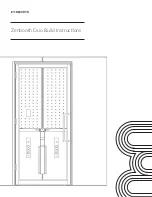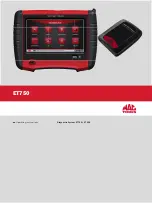
Document Reference: ENG-UMAN-000731
Revision: 5.00
Page 11 of 61
4.2.7
Electromagnetic interference (EMI)
As the CI communicates via the CST to the neurostimulator (eCLS or CLS) wirelessly, the
quality of this connection can be adversely affected by some types of electrical equipment
that generate EMI. Such equipment should be avoided where possible when programming
and/or suspected if communication between stimulator and CI/CST is poor. Examples of
such equipment found in clinical environments include but are not limited to: Mobile
phones, electro-surgery tools, electromagnets, radiofrequency identification devices and
emergency vehicle/services radios.
4.2.8
General precautions for the CI
The CI is a critical piece of equipment to enable the delivery of therapy. Always handle it
with care and regularly inspect the device for damage and/or impaired functioning. Never
modify the CI in any way. If you have concerns about the integrity of the CI/CST contact
Saluda Medical representatives to arrange repair or replacement. The CI runs on a
rechargeable battery and can be used wirelessly or whilst plugged in via the power adapter
supplied. Care should be taken to keep the CI well charged so it can be used in clinical
environments where plug sockets are not readily available. Always have a spare charged CI
available in case of malfunction.
4.3
Potential Risks
Every surgery involves potential risks, including death. In addition to these surgical risks,
the risks associated with the implantation and use of a spinal cord stimulation system
include:
Undesirable changes in stimulation sensation and/or location.
Uncomfortable changes in stimulation (over and/or under stimulation).
Persistent post-surgical pain at hardware implantation sites.
CLS migration, which may result in pain or difficulty in charging.
Seroma or hematoma at surgery sites.
Epidural hemorrhage, spinal cord injury and possible paralysis.
Lead migration from the location chosen at initial implantation resulting in
stimulation changes.
Breakage of the lead or failure of other system components, which may result in
loss of stimulation.
Rejection of, or allergic reaction to, the implanted components.
Infection that may require hospitalization with intravenous antibiotic therapy.
Cerebrospinal fluid (CSF) leakage.
Inadequate pain relief following system implantation.
Erosion of the lead, or CLS through the skin.
Weakness, clumsiness, numbness or pain below the level of lead implantation.
Note: The patient may require surgery (including revision, explant and replacement) as a
result of any of the above.












































